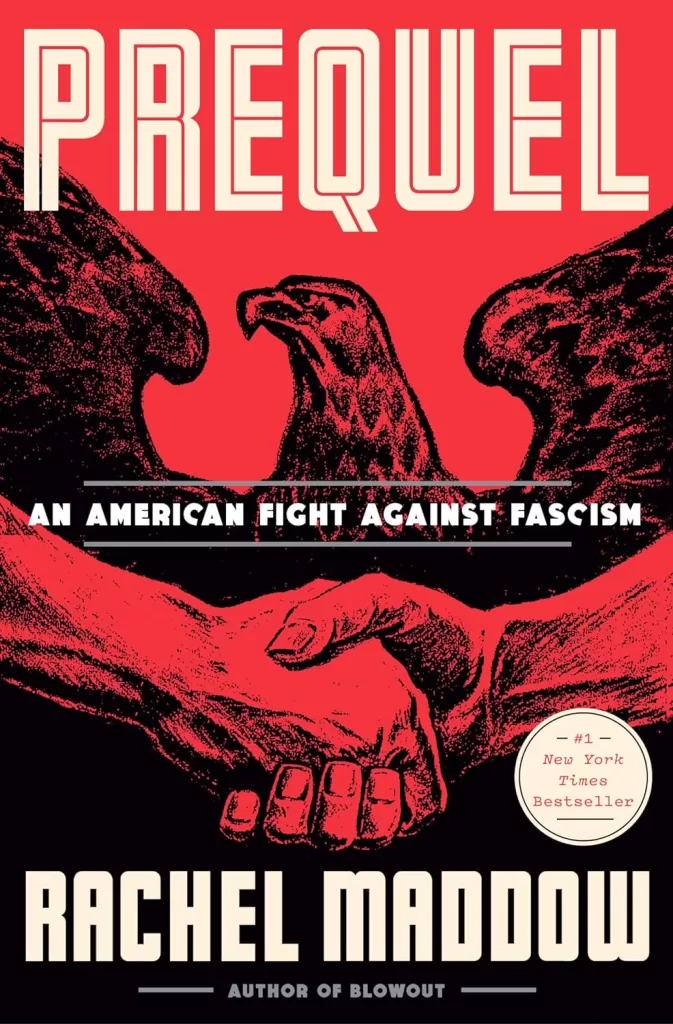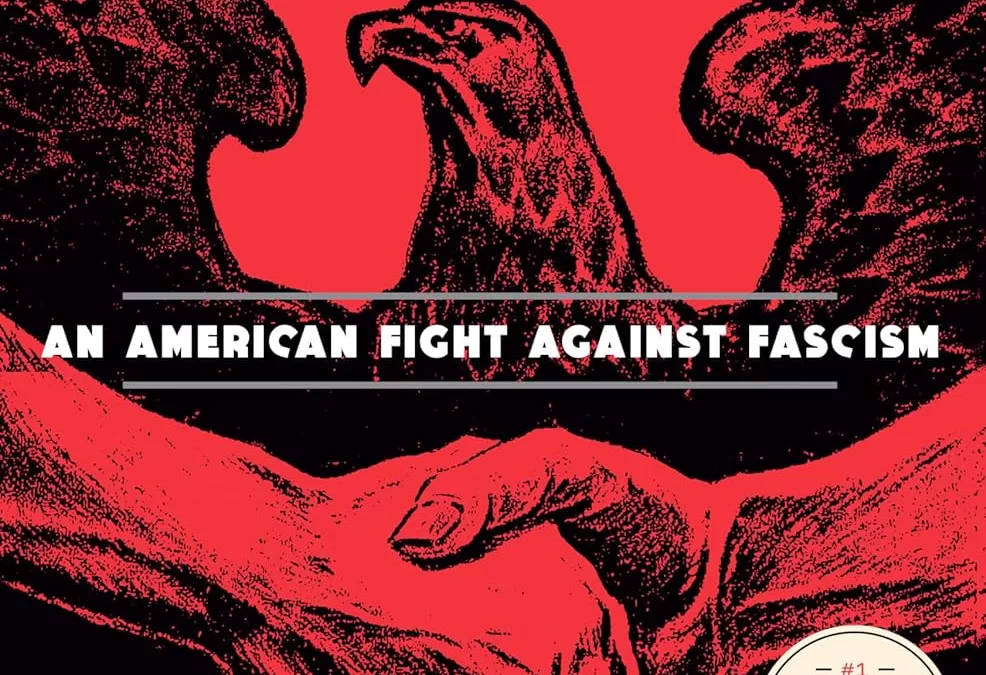
During the first half of the twentieth century, the United States participated in two world wars. In each case, the slaughter began long before America intervened and the country was starkly divided about what to do. Today, we tend to regard this debate as simply over whether or not the country should join the fight. Largely lost in this telling, however, is that prior to joining both world wars, there was also a great deal of debate as to which side America should support. This is particularly true as America watched from afar as Adolph Hitler rose to power in Nazi Germany of the 1930s.
After the atrocities Germany committed during the Holocaust were revealed, those Americans who had supported him before the war were less inclined to continue to sing his praises. Further, the war had been so unpredictably devastating that the narrative which took shape heavily favored celebrating American virtue. Indeed, WWII is sometimes referred to as “The Last Good War.” Unfortunately, the urge to portray America in a brilliantly positive light has overwhelmed the very real and widespread push in 1930s America to support Hitler or, at minimum, stay out of the fight altogether; leaving most of Europe to the Nazis.
Evidence of this historical white-washing can be found within a typical eighth grade American History textbook, which points out the presence of divisiveness in 1930s America but then uses dismissive language to minimize its significance. In a chapter covering the Great Depression, for example, it is noted that Adolph Hitler and Benito Mussolini were rising to power in Germany and Italy. After defining what it means to be a fascist, the textbook briefly notes that, “Although fascism never attracted many Americans, it drew enough attention to make it dangerous. During the Depression, fascists blamed Jews, Communists, and liberals for the country’s troubles.”
In another section, headed “Critics of the New Deal,” Father Charles Coughlin, a Catholic priest, “reached millions of listeners through his weekly radio programs… and used his… show to attack bankers, Jews, Communists, and labor unions, as well as the New Deal. In time, Coughlin lost support because of his extreme views.”*
I was reminded of this lesson after reading Prequel: an American Fight against Fascism (2023) by Rachel Maddow that explores the degree to which fascist ideas took hold among the American people in the years leading up to American entrance into World War II. In 1930s America, she writes, there existed “a violent ultra-right authoritarian movement, weirdly infatuated with foreign dictatorships, with detailed plans to overthrow the U.S. government, and even with former American military officers ready to lead.”
“The even more incendiary fact,” she continues, “was that these would-be insurrectionists enjoyed an astonishing amount of support from federal elected officials who proved willing and able to use their share of American political power to defend the extremists, to derail the Justice Department’s effort to thwart or punish them, and to shield themselves from criminal liability, when they were found out.”
“A lot of powerful figures in Congress, in the media, in law enforcement, in religious leadership,” she adds, “were bailing hard to keep the fascist boat afloat.”
As it turns out, one of the most celebrated episodes of American history—as so often is the case when examining national myths—has a very dark side, one that textbook publishers and local school boards often find very convenient to gloss over. This is particularly true in an age when some of the same ethnically and racially motivated impulses are surfacing once again in the Age of Trump. In Maddow’s enlightening account, American fascism, in the 1930s in particular, is the Prequel to today.
The circumstances in the Pacific Theater during World War II included a racial element that left very little American sympathy for Japan, especially after the attack on Pearl Harbor. However, as fighting raged in Europe beginning in 1914, and then again in 1939, it was most certainly NOT clear that if the US entered, it would be on the side of the British, French and other Allied Powers. Indeed, throughout these decades, there were those within the United States who rallied American support for Germany; including millions of German-American immigrants and their children. As Adolph Hitler emerged as a force in Germany of the 1920s, American support for him and his ideas gained purchase. By 1933, when Hitler took near-absolute control of Germany, there was a concerted and organized effort to bring Hitler’s brand of fascism to the United States.
Here are just a few of the examples of American-style fascism Maddow brings to light.
The Christian Front was organized by the followers of Father Charles Coughlin, whose weekly radio broadcast audience included nearly one in every four Americans. Made up largely of German and Irish Catholics, their widely dispersed message was filled with anti-Semitic and racial hate. Rallies organized by the Christian Front drew thousands proclaiming to be patriotic Americans. This is the same strain of Christian Nationalism we are confronted with today.
The Silver Shirts operated from 1933 to 1941 as a fascist organization who, as Maddow writes, “believed that Hitlerite fascism could be replicated in America.” Their weekly publication, distributed to dues-paying members, reads like a handbook for those attempting to undermine our democracy today; As Maddow cites, “the Silver Legion Ranger provided readers with somebody to hate—the Jews who were busy planning world domination” and were planning to “‘corrupt youth through subversive teaching’; destroy family life’; ‘dominate people through their vices’; ‘abase art and corrupt literature’; ‘undermine the respect for religion’; ruin the nervous system through inoculations and various poisons, and germs of disease’ [and] ‘grant universal suffrage, so that the destiny of each country is entrusted to men who lack culture and breeding…’”
Over 15,000 Americans paid dues to join the Silver Shirts, took the “Oath of Consecration,” received the weekly publication, and also a “shirt of silver with the great scarlet “L” emblazoned on your banner and over your heart, standing for love, loyalty and liberation.” As Maddow writes, “Duly initiated members were instructed to keep arms and to be ready to bear them.”
Another group, the pro-Hitler German American Bund promoted similar ideologies and famously held a rally in Madison Square Garden in 1939 attracting more than 20,000 attendees.
Other prominent Americans used their wealth and fame to support Hitler including Henry Ford and Charles Lindbergh. Ford’s publication, the Dearborn Independent, spewed anti-Semitic hate. “Wherever there’s anything wrong with a country, you’ll find the Jews on the job there,” Ford said. Copies of his rants were “distributed in Ford Motor dealerships across the country.” A four volume series titled The International Jew was “translated and published worldwide, in twelve international editions, including one in Germany…”
The German government found allies in the United States and actively dispatched agents to spread German propaganda. Maddow thoroughly documents that a “fairly massive pro-German propaganda campaign, funded from Berlin, was flooding the United States, reaching millions of Americans at school, at work, and at home.”
“The German Library of Information was mailing nearly 100,000 copies of its weekly news digest, Facts in Review, to the 1940 version of American ‘influencers’ – ministers, preachers, teachers, editors, elected officials.”
The messages relayed to millions of Americans portrayed Germany as a victim in its treatment after World War I. They justified everything Hitler had done up to that point; invading “Poland, Norway, Sweden, the Netherlands, and Belgium, attacking France and England, and terrorizing the Jewish population in Germany and every other place his stormtroopers took control.”
“The Nazis’ plain intent,” Maddow adds, “was to add stress to the cracks and fissures already visible in American life: rich versus poor, foreign born versus native born, non white versus white, gentiles versus Jews, northerners versus southerners, Democrats versus Republicans.”
Acting with impunity, a Nazi Agent named George Sylvester Viereck, coordinated with a number of congressmen and Senators to read Nazi propaganda into the Congressional Record and then print and mail copies of these speeches using a mailing list that included “650,000 teachers, 157,000 clergymen, 162,000 physicians, 144,000 lawyers, 73,000 dentists, 46,187 of the larger investors, 21,345 newspapers, 15,000 municipal offices, 11,687 millionaires, 11,000 libraries, 7,419 members of state legislatures, 7,000 accountants, 5,500 judges, 4,612 college fraternities and sororities and… more than forty other lists… All were targets for Viereck’s well-oiled Nazi propaganda machine.”
Adding insult to injury, much of the expense of this propaganda campaign was financed through the franking postage privilege of members of Congress and therefore subsidized by American taxpayers.
Then and now, immigration policy is at the heart of developing fascist support. As European Jews began seeking asylum in the United States, “Senator Robert Rice Reynolds, a North Carolina Democrat, [called] for federal legislation to close our borders to European Jews, despite the widespread knowledge by then that they were being rounded up—men, women, and children—and murdered by the Nazis.”
“I would build a wall about the United States,” he said, “so high and so secure that not a single alien or foreign refugee from any country upon the face of the earth could possibly scale or ascend it.”
Retired Army General George Van Horn Moseley, who Maddow describes as a potential “American führer,” made a “public case to sterilize any Jewish person immigrating to the United States.”
There is so much more including accounts of those acquiring weapons and making plans for coordinated attacks to disrupt American life.
As to my history lesson that began with a dismissive and brief account of 1930s American-style fascism within our textbook, I also shared with my students a collection of photographs from the era. In these, several signs from American beaches proclaimed “No Jews or Dogs Allowed.” Others showed large gatherings of Americans in uniforms emblazoned with swastikas while carrying both the American flag and the swastika flag of Nazi Germany. Still others showed young people gathering at camps throughout the country, engaged in military style training with Nazi-inspired uniforms and symbols.
(Skepticism about such evidence can be quickly dispelled by viewing many the troubling photographs that appear in a 2017 Atlantic article found here: https://www.theatlantic.com/photo/2017/06/american-nazis-in-the-1930sthe-german-american-bund/529185/ )
I then asked students to compare these images to the language in the textbook and make some inferences in an attempt to answer questions like these:
What role did fascism play in the United States in the lead-up to World War II? Where might you find additional information to defend or discredit this inclination? And, finally, what does any of this have to do with the United States today? We also explored why our state and district-adopted textbook limited its coverage of these events while clearly dismissing their significance.
We have a clear opportunity here to examine 1930s America in light of today’s events. Unfortunately, when the fascists get going, they target the same pipeline of information and institutions necessary to engage wisely with one another. Here is what they do and I know this because it has happened before. They impose legal limits on what can or cannot be talked about in classrooms. They ban books. They blame groups of non-white and non-Christian people for the country’s problems. They isolate the country from the rest of the world and build walls. They abuse their political power. They threaten to remake the Constitution. They flout the laws that hold elected officials accountable and then attack the institutions of justice that exist to do just that. They minimize the significance of those who have already engaged in political violence. They relentlessly attack the media. And, most recently, they prop up their leader as a messianic figure sent by God to save America.**
And, today, in all the chaos, their conspiracies, accusations, and lies percolate and occasionally metastasize on the internet.
The most important thing I have failed to mention is that today’s Prequel included a handful of courageous Americans who identified the nature of the fascist threat in America and stood up to it. Thankfully, we also have people like that today… Rachel Maddow, for instance.
*The American Journey (2009), Glencoe/McGraw-Hill publisher




